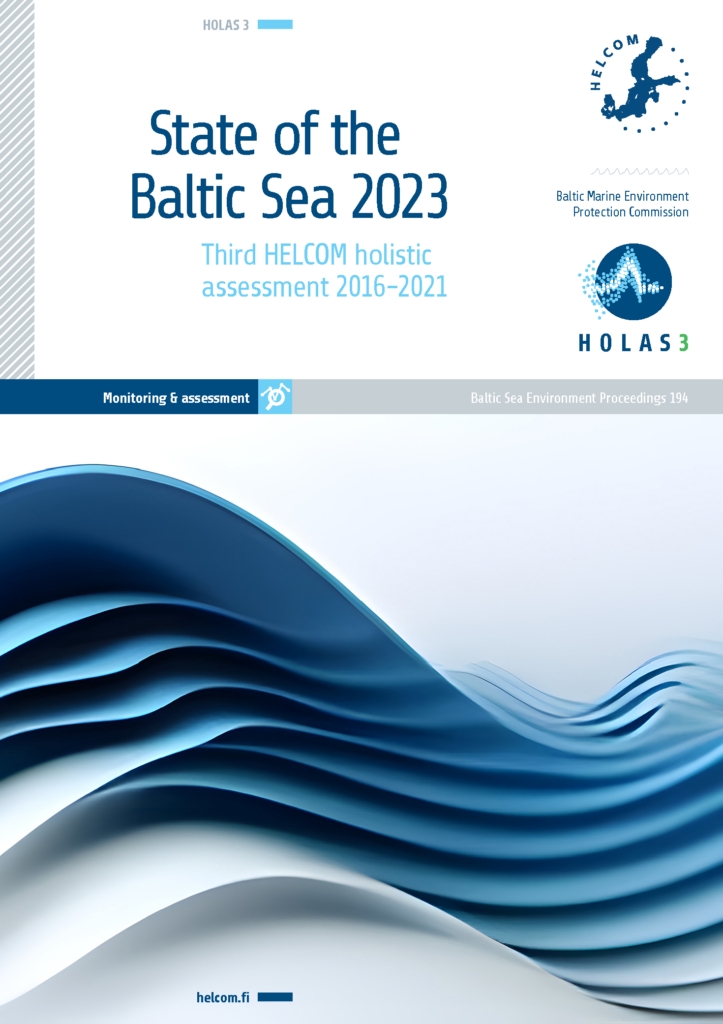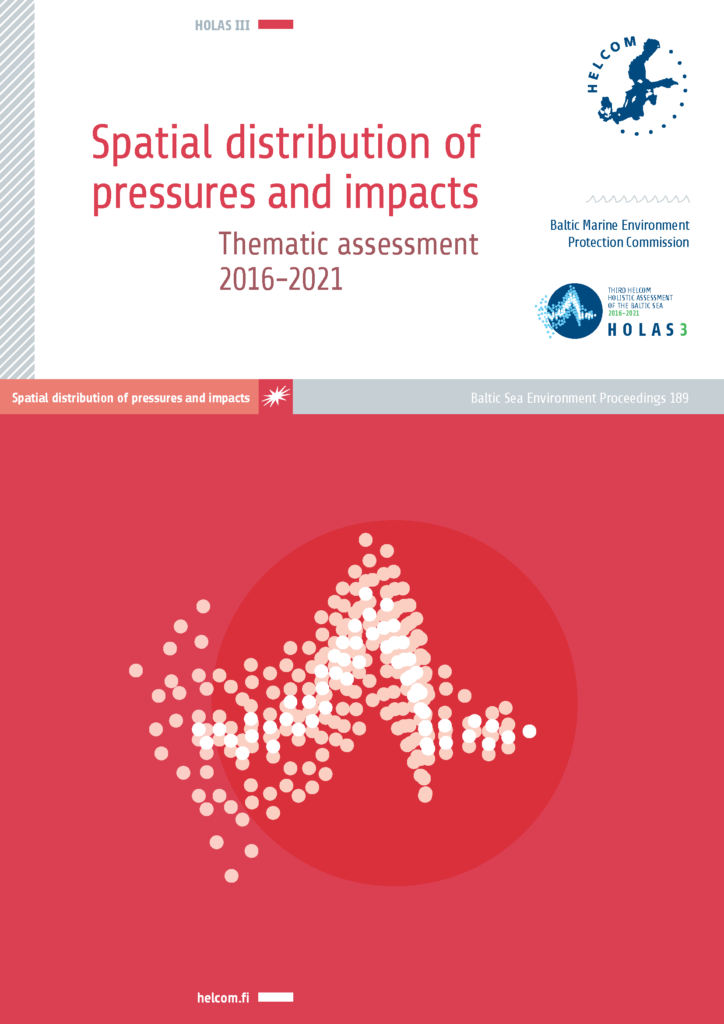DISTRIBUTION
Spatial distributions of ecosystem components, human activities, pressures, impacts and ecosystem services
The Baltic Sea is influenced by a range of pressures from human activities. In order improve its environmental status in an efficient and adequate way, it is of key importance to map activities which affect the marine environment, analyse what effects they have and how strong the effects are, and assess what this means for the ecosystem. Furthermore, while some activities and pres- sures might seem of little importance individually, their summed impact can be considerable when they occur in the same place, particularly in areas with sensitive species or habitats.
The HELCOM Spatial Distribution of Pressure and Impact Assessment (SPIA) analyses data on the distribution of ecosystem components (such as species or habitats), pressures and human activities, thus linking human activities with the pressure (or pressures) they cause. It links spatial information on ecosystem components with spatial information about pressures, identifying where they overlap and how sensitive a given ecosystem component is to a particular pressure. This provides an overview of the potential impact of a given pressure or subset of pressures on one or more ecosystem components, allowing us to trace which activity underpins the pressure(s) causing an impact. Each of these assessment steps can provide valuable contextual information to the results of the other assessments included in the holistic assessment of the state of the Baltic Sea.
The SPIA is an effective tool for deepening our understanding of how different pressures act on the Baltic Sea ecosystem, where they are most common, and in what areas different pressures co-occur. This information can be important for management and planning purposes.

State of the Baltic Sea 2023 — The third HELCOM holistic assessment (HOLAS 3)
State of the Baltic Sea 2023 is a synthesis report that builds on, and integrates, results from a wide range of assessment products produced within the third HELCOM holistic assessment. Its role is to link information from the underpinning assessment products together, thus highlighting the holistic aspects. With this in mind, the summary report focuses on presenting the results and on an in-depth look at why we are seeing these results, providing over-arching context and analysis. The report helps develop a clearer picture of where we are and how things are connected, supporting coordinated and effective measures to strengthen the Baltic Sea environment.

Thematic assessment
Spatial analyses of pressures and impacts in HELCOM
The thematic assessment report on the spatial distribution of pressures and impacts analysis (HELCOM 2023e) clarifies the methodology of the HELCOM spatial pressures and impacts analysis (SPIA) for the years 2016-2021. The comprehensive approach of the SPIA differs from the other thematic assessments, which address topics in a more sectoral manner.
The SPIA examines the spatial distribution and intensity of different human activities and pressures and uses the best available knowledge to quantify their combined effects.

